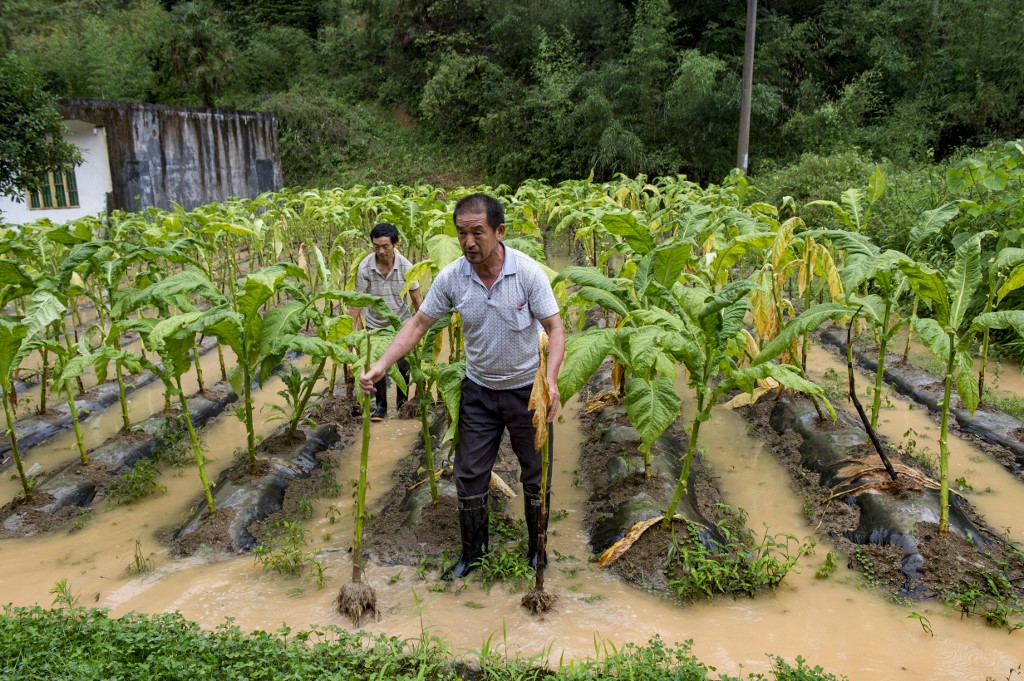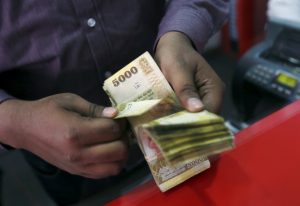Senior officials at the United Nations have warned the Security Council there is a risk of acute food insecurity in many parts of the world – caused by conflict, climate change and the Covid-19 pandemic. Food shortages are on the rise globally and threaten to reach “biblical proportions” without immediate action to address the root causes, top officials dealing with food issues said.
China may be one of the countries at risk. Hou Liwei, a researcher at the Institute of Agricultural Economics and Development in the Chinese Academy of Agricultural Sciences, believes that the widening domestic and international price gap may cause corn imports to increase for some time.
“The supply chain of agricultural products is blocked, especially with the spread of the global epidemic now spreading. The model of excessive dependence on imports from a single country has trade risks,” Hou said.
China, one of the world’s most populated nations, looks likely to face a series of events that will lead to food shortages. The coronavirus had an initial effect, stopping early yields and it has been followed by weeks of heavy rain and the worst flooding – some say in hundreds of years – in southern, central and eastern China.
Water levels in more than 400 rivers have exceeded warning levels, while 15 million people have been evacuated in July alone.
Critics blame the country’s reliance on coal for power causing global warming and rampant overdevelopment and poor water conservation caused by overbuilding of dams and levees.
Curiously, the country’s north and far West – Xinjiang – are suffering a severe drought.
Thirdly, a series of infectious diseases have ripped through China’s pig farming industry. Bird flu is prevalent in the south among wild bird populations, and it is only a matter of time before it jumps species.
Also, although China claims to have enough food reserves of corn and wheat, Chinese investigators have found that in many places supplies are tainted, with mouldy crops that have been mixed with soil to increase the weight.
Many times when inspection teams have been sent to check grain silos, they have a habit of “mysteriously” catching on fire, as though local officials want to cover their dereliction of duty.
Food prices rising
China is already seeing food inflation. According to data from the National Grain and Oil Information Center, as of June 30, the price difference between domestic and foreign corn has widened to 638 yuan (US$91) per tonne. Prices for food are increasing across the board – and higher prices imply scarcity.
Li Suoqiang, director of the Rural Department at the National Bureau of Statistics, said this year food production would remain “good and bad”, but considered the overall trend to be good.
The latest data released by the Bureau shows the total output of summer grains this year was 142.8 million tonnes, an increase of 1.2 million tonnes or 0.9% over 2019. Another bumper harvest of summer grains laid the foundation for stable production throughout the year.
However, he said the negative impact on grain crops by the floods that have swept the south in the current wet season “should not be underestimated.”
Li Suoqiang said the main reason for the increase in summer grain yield was that overall weather conditions were favourable, plus field management was strengthened and there was effective control of pests and diseases in the later period.
Asked if the epidemic would have a substantial impact on national food security, he said: “There is no need to worry about my China’s overall food security in 2020.”
Yet, according to the Ministry of Water Resources, the Yangtze River had its No-1 flood of 2020 on July 2, prior to early warnings of the Yangtze’s No-2 flood and the Huaihe River’s No-1 flood of 2020 on July 17.
Up to now, all response levels have been activated. And Flood no-3 is reportedly on its way. In the last huge flood in 1998, officials counted five waves of flooding.
Meanwhile, Northeast China is suffering drought. On July 15 to 18, various county weather bureaus, and the Municipal Agriculture and Rural Bureau carried out farmland surveys and studied drought-resistant counter-measures.
They investigated the growth and drought conditions of field crops such as corn and soybeans, and monitored the soil moisture in farmland.
This revealed that conservation tillage plots, early sowing plots and crops were growing better, but late sowing plots, plus those on hilly slopes and sandy land had wilted, shattered, yellowed, and withered. They advised farmers to take effective measures.
Xi tours Jilin province
After days of not being seen in public, President Xi Jinping made an inspection tour of Jilin province last week from July 22 to 24.
According to the state press, in three days, Xi Jinping went deep into rural areas, communities, science and technology parks, and enterprises to coordinate and promote normalised epidemic prevention and control.
He went to promote the revitalisation of Northeast China, and plan economic and social development during the “14th Five-Year Plan” period.
The Peoples’ Daily said Xi, on this trip to Jilin, had five vivid and concise sentences with extremely profound meaning.
When he was at Jilin’s Songliao Plain, known as the “Golden Corn Belt” and “Hometown of Soybeans”, he was in one of the main grain producing areas in the country.
Xi walked into the cornfield to observe the cultivation in the black soil and the growth of the corn. He emphasised that effective measures must be taken to protect the land with the black soil, the “giant panda in arable land.”
Xi placed great emphasis on black soil, food security and agricultural development, the paper said.
In September 2018, when Xi Jinping held up a bowl of rice during an inspection in Heilongjiang, he said meaningfully: “Chinese food! Chinese rice bowl!”
During his tour to Jilin this time, Xi said that Jilin should put food security in a prominent position, and people should not relax.
Was that a pointer to what lies ahead?
• Chris Gill
























